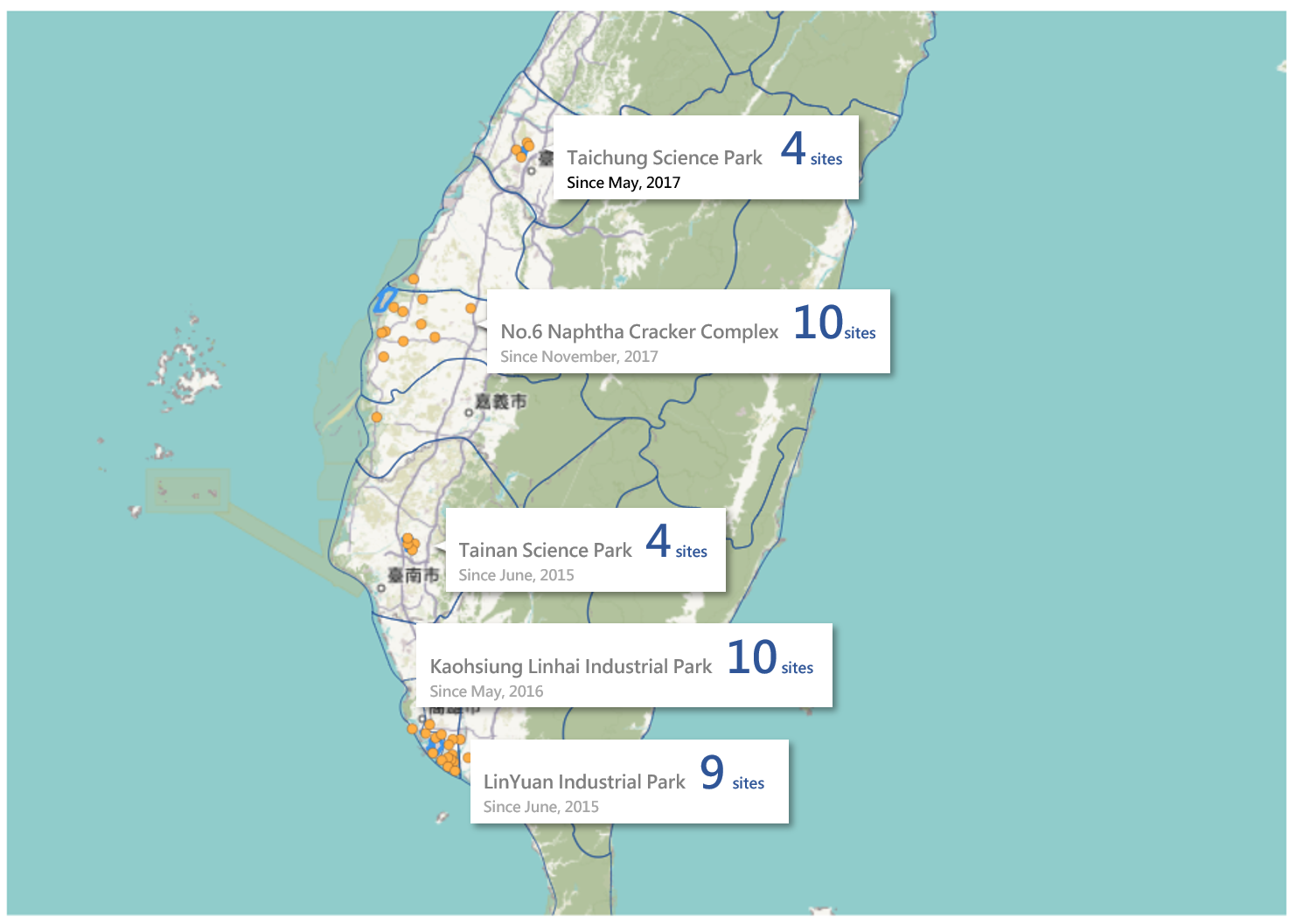Background
To grasp the impact of air pollutants emission from special industrial zones on air quality and protect people's health, the Environmental Protection Agency established "Standard for the Establishment of Buffer Zones and Air Quality Monitoring Facilities in Special Industrial Park" in 1983.
The Standard defines special industrial classification types, buffer zones, air quality monitoring facilities, and other relevant regulations that can real-time understand air quality in neighboring Special Industrial Park. Furthermore, the Standard can evaluate whether the development of the industrial zone has unexpected adverse effects on the surrounding environment and establish basic information on air quality that provides a reference for drafting control strategy.
When there is a special industry zone with a quarter of the industrial park area, the developer should set up buffer zones around the park and air quality monitoring facilities in appropriate locations. Table 1 shows the 14 selected special industrial classification types.
Air quality monitoring
In Taiwan, there are 7 special industrial parks, including the Linyuan Industrial Park in Kaohsiung City, Kaohsiung Linhai Industrial Park in Kaohsiung City, No.6 Naphtha Cracker Complex in Yunlin County, Taichung Science Industrial Park in Taichung City, Tainan Science Industrial Park in Tainan City, Zhunan Science Industrial Park in Miaoli, and Hsinchu Science Industrial Park in Hsinchu. Figure 1 shows the 43 air quality monitoring stations currently in operation.
- Monitoring station installation: Following the site selection principle of the Standards, four air quality monitoring stations shall be installed at least. If metals smelting industry, oil refining industry, basic petrochemical industry, pulp industry, cement manufacturing industry, coking industry, electricity generating enterprise using coal, oil, and gas as fuel are accommodated in the parks, additional one station shall be installed in the township (city or district) where the parks are located, and the township (city or district) surrounding the boundary of parks, respectively.
- Monitoring items: Typical air pollutants (PM2.5、PM10、SO2、NOx、NO、NO2、CO、O3、and hydrocarbons ) 、meteorological factors (wind direction, wind speed, temperature, relative humidity, and precipitation). Specific air pollutants listed in Tables 3 are required to be monitored for special industries in the special industrial parks.
- Monitoring frequency: The monitoring frequency of dioxins shall be once every year, and once every month in the first two to three years after the modification of special industrial parks. In addition, the monitoring frequency of automatic monitoring and manual monitoring shall be continuous monitoring and once every six days, respectively.
- Telecommunications transmission and reporting: Following the Directions for Output Signal of Air Quality Monitoring Facility for the Special Industrial Parks and Telecommunications Transmission Equipment, the monitoring data handling system shall be internet connected the competent authority, and the record files of previous one hour shall be transmitted hourly for the items monitored by the automatic monitoring facility. For the items determined by manual monitoring, the data of previous quarter shall be reported to the competent authority by the end of February, May, August, and November each year.
- Quality assurance and control: The quality assurance and control of air quality monitoring shall follow the Quality Assurance Procedures of Air Quality Monitoring Facility for the Special Industrial Parks. The calibration recordings of previous one day shall be transmitted to the competent authority every day. The results of monitoring and analysis shall be preserved for five years for the checking by the competent authority.

Note: Linyuan industrial park and Linhai industrial park are combined to set up a total of 2 stations.
Figure 1. Location of the monitor station in special industrial zone
For more details, please refer to the following links: